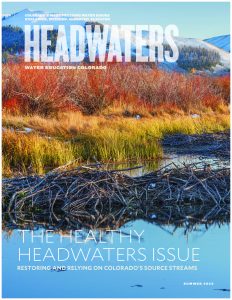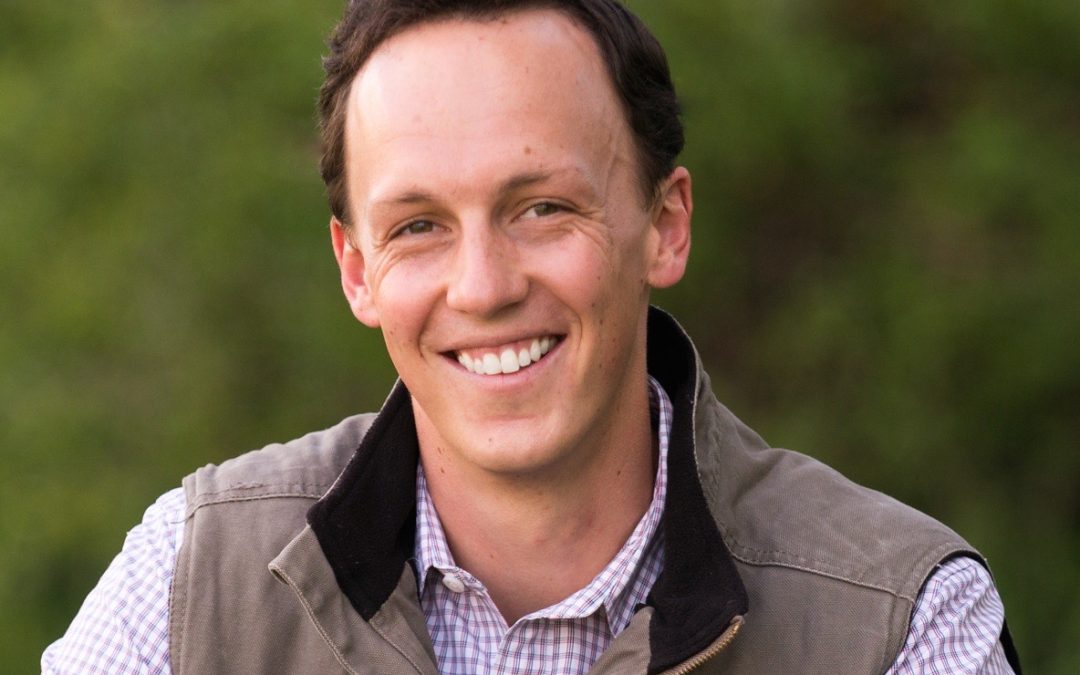We spoke with Senator Dylan Roberts, D-Avon, for the summer 2023 issue of Headwaters magazine “The Healthy Headwaters Issue” about healthy riparian systems and Senate Bill 23-270, signed into law in early June. Sen. Roberts sponsored this bill on Projects to Restore Natural Stream Systems and continues to work on next steps related to restoration. Sen. Roberts is a member of the WEco Board of Trustees and chair of the Colorado Senate Agriculture and Natural Resources Committee, he serves Colorado’s Eighth Senate District.
Can you speak to the importance of Colorado’s headwater systems, and what you hear from constituents about healthy streams and riparian areas?
So this is an issue that’s incredibly important here on the Western Slope and here in the headwaters area of the Colorado River, or any river system. Having healthy watersheds is vital for the entire river system. I’ve heard of and personally seen many great stream restoration projects across my district and across the state and have been able to see the value of them and the way they preserve our environment and protect our watersheds. So that is one of the reasons why I was very enthusiastic to sponsor the stream restoration legislation last session.
Tell us more about that. In this last session you sponsored a bill focused on Projects to Restore Natural Stream Systems, what was the impetus for that?
It was building off of some of the great work that we’ve seen with stream restoration projects across the state but also hearing from local governments and nonprofit groups and organizations that wanted to do more [restoration work] but were running into legislative hurdles or cost burdens preventing those projects from happening. So the reason for that legislation was to reduce some of the barriers getting in the way of these important projects.
And it sounds like the focus of that bill was significantly narrowed before it was passed, can you talk about what happened there? Is there an impact?
So we had been working with stakeholders and [the Colorado Department of Natural Resources] (DNR) for many months prior to the introduction of that bill and then the work continued after the introduction and we heard some very valid concerns from folks in the water community that the threat in the way the bill was introduced could have unintended consequences … so we worked with them through amendment and committee processes and narrowed the scope of the bill. So the bill [that passed] this year was focused on minor restoration projects and we’re going to continue the conversation this summer and fall and into the next [session] about tackling bigger restoration projects … ultimately the legislation that passed is going to be very impactful and is ultimately going to help us set up a conversation [around bigger restoration projects] moving forward.
What comes next? Is there ongoing work and study to see if some of the gray areas around restoration can be cleared up through legislation in the future?
I was just speaking with DNR about this and we are currently planning a field trip for the Water Resources and Agriculture Review Committee to go down to the San Luis Valley in July to look at some stream restoration projects that have happened down there … Then I plan to have the stream restoration topic as part of our committee agenda during our fall meeting and hope to engage all of the relevant stakeholders if we decide to move forward [with reintroducing legislation] in the next session.
For folks on the committee and the broader water community, to make sure they’re comfortable with the bill we need to figure out the size of projects or the scope of projects that would be acceptable to move forward outside of the water court process. The big concern that we heard before the bill was amended this year was that there were projects that were too big to move forward without going through the water court process which would have put some downstream users at risk without having a forum to object to that.
We need to find what is the acceptable size of a project that we can put in statute that doesn’t need to go through the water court process, and what size of project should still need to go through that [water court] process so it’s finding that delineation point.
Ideas in water take a lot of time to discuss and we don’t want to rush into anything and have things result in unintended consequences. So just having the stream restoration concept top of mind for folks in Colorado in a multi-year process will get everyone comfortable with the process, get everyone an opportunity to engage, and make sure we’re not rushing through legislation.
I’ve heard that everyone thinks stream restoration projects are a good thing but it was a new thing for a lot of people to see legislation that would have expanded [the scope of which projects can proceed without going through water court]. But the fact that we’re just keeping it at the top of everybody’s radar will help a lot to make folks more comfortable.
Is there anything else in the works or that you’re thinking about related to the restoration and preservation of stream systems?
On the restoration front, one of the other reasons why we passed the bill this year and something I’m going to stay in touch with DNR on is there is a historic amount of funding available from the federal government through some of the legislation that Congress passed over the last couple of years that can be accessed through these projects. So that’s the other hurdle is having the approval and funding to [proceed with these projects and implement them]. So I want to continue following how does Colorado maximize the federal funding for these projects.
Us passing that bill and getting it signed into law is a huge step because now Colorado can say we’ve cut down some barriers. We want to maximize federal funding to get as many of these projects off the ground as possible.
And as a Water Education Colorado (WEco) board member, anything to say about your time on the board or our work?
I am thrilled and honored to be on the WEco board. I just became the chair of the Senate Agriculture and Natural Resources Committee over the past year so that’s how I’m able to be on that board [one seat on the WEco board is reserved for the Senate committee chair and one seat is reserved for the House Agriculture, Livestock and Water Committee chair] but I’ve been involved with WEco during my time on the legislature, and value the things that WEco does.
I think us working on stream restoration and WEco’s work more broadly couldn’t come at a more important time. We know Colorado’s water future is top of mind for many people and a lot of people are worried about our state’s water future. The work that WEco does and the work the legislature is doing could not be more important. There are a ton of opportunities and exciting things happening with WEco and the state so I’m excited about the work ahead.
 Read more about watershed restoration work in Colorado and about SB 23-270 in the summer 2023 issue of Headwaters magazine “The Healthy Headwaters Issue.”
Read more about watershed restoration work in Colorado and about SB 23-270 in the summer 2023 issue of Headwaters magazine “The Healthy Headwaters Issue.”


 Print
Print